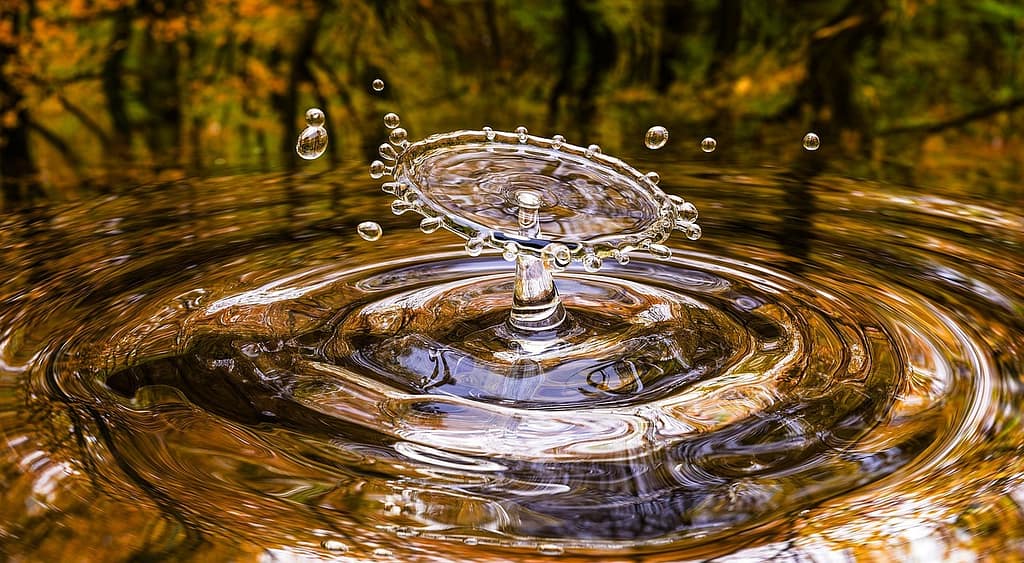Topsoil, the lifeblood of our planet’s fertile lands, is a precious and irreplaceable resource. This essential component of healthy ecosystems plays a critical role in agriculture, food security, and environmental well-being. Yet, it is often taken for granted and faces significant threats due to erosion, mismanagement, and development.
Introduction to Topsoil
What is Topsoil?
Topsoil, also known as the agricultural soil layer, is the uppermost layer of the Earth’s crust. Typically ranging from just a few inches to a few feet deep, it’s a complex mixture of mineral particles, organic matter, air, water, and countless living organisms. This intricate composition makes it fertile and allows it to support vibrant plant life.

Importance of Topsoil
Topsoil is vital for several reasons:
- Soil Health: Rich in nutrients and organic matter, this soil provides plants with the essential elements they need to thrive. It also acts as a natural filter, breaking down pollutants and contaminants.
- Agricultural Productivity: Healthy topsoil is the foundation for productive agriculture. It allows for better root growth, water retention, and nutrient availability, leading to higher crop yields.
- Environmental Significance: Topsoil plays a crucial role in regulating the Earth’s climate by storing carbon dioxide. It also helps filter rainwater, preventing flooding and promoting clean water sources.
Role of Topsoil in Agriculture
Healthy topsoil acts as a natural bioreactor, teeming with beneficial microbes that convert organic matter into usable nutrients for plants. This complex ecosystem ensures the long-term sustainability of agricultural practices. It also promotes proper drainage and aeration, allowing plant roots to access oxygen and water efficiently.
The quality of topsoil directly impacts agricultural productivity. Depleted or eroded soil leads to:
- Reduced crop yields
- Increased reliance on chemical fertilizers
- Increased susceptibility to pests and diseases
Investing in topsoil preservation practices is essential for ensuring long-term food security and sustainable agricultural practices.

Composition of Topsoil
Layers of Topsoil
Topsoil can be further divided into distinct sublayers:
- The O horizon (Litter layer): This uppermost layer consists of freshly fallen leaves, twigs, and other organic debris.
- The A horizon (Topsoil): This is the darkest and most fertile layer, rich in organic matter, humus, and mineral particles. It’s the primary zone of plant root growth and microbial activity.
- The B horizon (Subsoil): This layer contains less organic matter but holds more clay and minerals. It acts as a transition zone between topsoil and the parent rock below.
Organic Matter and Nutrients
Organic matter, primarily decomposed plant and animal material, is a crucial component of healthy topsoil. It improves soil structure, increases water-holding capacity, and provides essential nutrients for plant growth. Humus, a complex organic material formed by the decomposition of organic matter, is a crucial reservoir of nutrients like nitrogen, phosphorus, and potassium.
The balance of these nutrients within the topsoil is essential for plant health. Deficiencies in specific nutrients can hinder plant growth and lead to lower crop yields.

Physical Characteristics
The physical characteristics of topsoil are equally important for plant health. These include:
- Texture: The relative proportion of sand, silt, and clay particles determines the texture of topsoil. A balanced texture allows for proper drainage and aeration, while unbalanced textures can lead to problems like waterlogging or excessive drainage.
- Structure: The arrangement of soil particles into aggregates (clumps) determines the topsoil’s structure. A well-structured topsoil has good air and water infiltration, promoting healthy root growth.
- Porosity: The amount of space between soil particles that can hold air and water is termed porosity. Ideal topsoil has a balanced porosity, allowing for both air and water retention, crucial for plant growth.
Preserving and Enhancing Topsoil
Conservation Techniques
Protecting our valuable soil resources requires a multi-pronged approach. Here are some key conservation techniques:
- Reduced Tillage: Minimizing tillage practices helps maintain soil structure and reduce erosion. Techniques like no-till farming and cover cropping can significantly improve the soil’s health.
- Crop Rotation: Planting different crops in sequence helps replenish nutrients and prevent soilborne diseases.
- Composting and Mulching: Adding organic matter through compost and mulch helps improve soil fertility, structure, and water retention.
- Buffer Strips: Planting vegetation along waterways and field edges helps slow down water flow and prevent erosion.

Preventing Erosion
Erosion is a major threat to topsoil. Wind and water can quickly remove this valuable resource if left unchecked. Here are some ways to prevent erosion:
- Terracing: Constructing terraces on slopes reduces water flow velocity and prevents soil loss.
- Windbreaks: Planting windbreaks as strategically placed rows of trees and shrubs creates barriers that disrupt wind patterns, reducing wind speed near the ground and minimizing wind-induced erosion. Selecting native, drought-tolerant species for windbreaks is ideal, as they require less water and provide additional habitat benefits for wildlife.
- Contour Planting: Planting crops across the slope, rather than up and down, helps slow down water runoff and prevent erosion. This practice creates natural barriers that impede the flow of water, allowing it to infiltrate the soil instead of washing away the soil.
- Bioengineering Techniques: Incorporating bioengineering techniques like the use of biodegradable fabrics and vegetation mats can be particularly effective on steeper slopes. These techniques help stabilize the soil surface and promote vegetation establishment, ultimately reducing erosion.
Incorporating Organic Matter
Maintaining and enhancing the organic matter content of topsoil is critical for long-term fertility and soil health. Here are some effective methods:
- Composting: Composting food scraps, yard waste, and other organic materials creates a nutrient-rich amendment that can be added to topsoil to improve its quality. Composting not only enriches the soil but also reduces the amount of waste going to landfills.
- Manure: Applying composted manure from animals provides a natural source of slow-release nutrients and organic matter for topsoil. However, proper manure management is crucial to avoid contamination of soil and water sources.
- Cover Crops: Planting cover crops during fallow periods helps suppress weeds, prevent erosion, and fix nitrogen in the soil, enriching the topsoil with organic matter. Selecting cover crops with deep root systems can further enhance soil health by improving drainage and aeration.

Challenges and Solutions
While numerous techniques can promote topsoil conservation, several challenges hinder its widespread implementation. Here are some key challenges and potential solutions:
- Population Growth and Increased Food Demand: As the global population continues to grow, the demand for food production intensifies, putting pressure on agricultural lands and potentially leading to unsustainable practices that deplete topsoil.
- Climate Change: Changes in weather patterns, such as increased frequency and intensity of droughts and floods, can accelerate soil erosion and degrade topsoil quality.
- Economic Factors: Adopting some topsoil conservation practices can require initial investments in equipment or materials. Financial incentives and educational programs can help farmers overcome these economic barriers and encourage sustainable practices.
Sustainable Solutions:
Advancements in agricultural science and technology are offering promising solutions for mitigating these challenges and promoting topsoil conservation. Some examples include:
- Precision Agriculture: Utilizing technologies like GPS and soil sensors allows for targeted application of fertilizers, pesticides, and water, minimizing waste and optimizing resource use.
- Biochar: Biochar, a charcoal-like material produced from organic matter through pyrolysis, can be added to soil to improve fertility, water retention, and carbon sequestration.
- Regenerative Agriculture: This holistic approach to farming focuses on practices that improve soil health, biodiversity, and ecosystem services, promoting long-term sustainability.

Case Studies in Topsoil Conservation
Real-world examples showcase the effectiveness of implementing topsoil conservation practices. Here are a few inspiring case studies:
- The Green Revolution in India: The introduction of high-yielding crop varieties and improved irrigation practices in India during the Green Revolution significantly increased agricultural productivity. However, the intensive use of chemical fertilizers also led to topsoil degradation. In recent years, a renewed focus on organic farming practices and soil health management is helping to restore topsoil quality and ensure long-term sustainability.
- The Quiñamanca Valley in Peru: The Quiñamanca Valley in the Peruvian Andes is known for its tradition of sustainable agriculture. Local farmers have developed ingenious techniques like using “chacra” raised beds and natural fertilizers to maintain soil fertility and conserve topsoil for generations.
- The Land Stewardship Project in the USA: The Land Stewardship Project, a non-profit organization in the Midwestern United States, promotes sustainable agriculture practices among farmers. Their efforts include educational programs, on-farm research trials, and policy advocacy, all aimed at encouraging techniques that protect topsoil and promote long-term soil health.
Global Perspective on Topsoil Conservation
Topsoil preservation is not just a local concern; it’s a global challenge requiring international cooperation. Here are some key initiatives and organizations working towards this goal:
- The Food and Agriculture Organization (FAO): The FAO, a specialized agency of the United Nations, promotes sustainable soil management practices and provides technical assistance to member countries in developing strategies for topsoil conservation.
- The Global Soil Partnership (GSP): The GSP is a voluntary alliance of governments, international organizations, and stakeholders working together to promote sustainable soil management practices at all levels.
- The World Congress on Soil Science: This international forum brings together soil scientists, policymakers, and stakeholders from around the world to discuss advancements and challenges in soil management, including topsoil conservation.
By understanding the global significance of topsoil and the collective efforts of these organizations and initiatives, we can create a future where healthy topsoil is not just preserved but actively restored.
Additional Considerations
- Soil Testing: Regularly testing your soil allows you to identify any nutrient deficiencies and tailor your soil management practices accordingly. This proactive approach helps ensure you’re providing the right nutrients for optimal plant growth while preventing overapplication of fertilizers that can harm the environment.
- Sustainable Practices: Adopting a holistic approach to land management is crucial for long-term topsoil health. Practices like crop rotation, reduced tillage, integrated pest management, and water conservation work in synergy to protect topsoil and promote a healthy, balanced ecosystem.
- Public Education and Awareness: Raising public awareness about the importance of topsoil conservation is essential. Educational programs, community initiatives, and responsible consumer choices can collectively contribute to a shift towards practices that support healthy soil.
Conclusion
Topsoil is a finite and irreplaceable resource that forms the foundation for healthy ecosystems, food security, and a sustainable future. By adopting responsible land management practices, promoting topsoil conservation, and fostering public awareness, we can protect this precious resource and ensure its continued bounty for generations to come.
Taking Action
There are many ways individuals can contribute to topsoil conservation efforts. Here are a few suggestions:
- Support Sustainable Agriculture: Choose to purchase food products from farms that prioritize sustainable practices, such as organic farming or reduced tillage.
- Compost Food Scraps and Yard Waste: Composting organic materials at home helps reduce waste and creates a valuable amendment for your garden or local community garden, contributing to improved soil health.
- Plant Native Trees and Shrubs: Planting native vegetation not only enhances biodiversity but can also help prevent soil erosion on your property.
- Spread Awareness: Talk to friends, family, and your local community about the importance of topsoil conservation. Sharing knowledge and encouraging sustainable practices can create a collective impact.
By taking action, both individually and collectively, we can ensure that this vital resource remains healthy and productive for generations to come. The future of our planet and our food security depends on our commitment to protecting and nurturing our precious topsoil.





